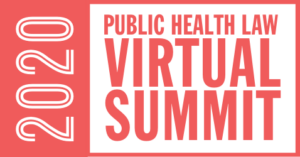
Assessing Federal, State and Local Response Measures
Concurrent Session Block 1: 1:15 – 2:15 p.m. ET Wednesday, September 16
Presentations
A Chronological Overview of Federal, State, and Local Emergency Measures
Since the first case of COVID-19 was confirmed in the United States, federal, state and local governments have taken varying degrees of legal action to prevent the spread of the virus and mitigate its impact on the public’s health and health care systems. Federal action has primarily consisted of national emergency declarations, travel bans, laws aimed at mitigating economic impacts of COVID-19, and guidance on social distancing measures. Legal action at the state and local level has focused heavily on social distancing requirements and measures to reduce the spread of the virus, including stay at home requirements, prohibitions on large gatherings, closures of non-essential businesses and schools, and mandatory use of face coverings. This session with provide an overview of these actions, identifying the chronology of the federal legal response and highlighting policy trends at the state and municipal level.
- Katie Moran-McCabe, JD, Special Projects Manager, Center for Public Health Law Research, Temple University Beasley School of Law
A Portrait of COVID-19 in Minnesota
This session will provide insight into the interaction between, and the powers and responsibilities of, the governor, the state health commissioner, the legislature, local public health and Tribal Government in Minnesota in response to COVID-19. Examples of issues, including case investigation and contact tracing; emergency declaration and executive orders; sharing data with law enforcement and the state’s mask mandate will be provided along with the corresponding legal considerations these issues raise.
- Patricia Freeman, JD, MPH, Legal Counsel/Policy Analyst, Minnesota Department of Health